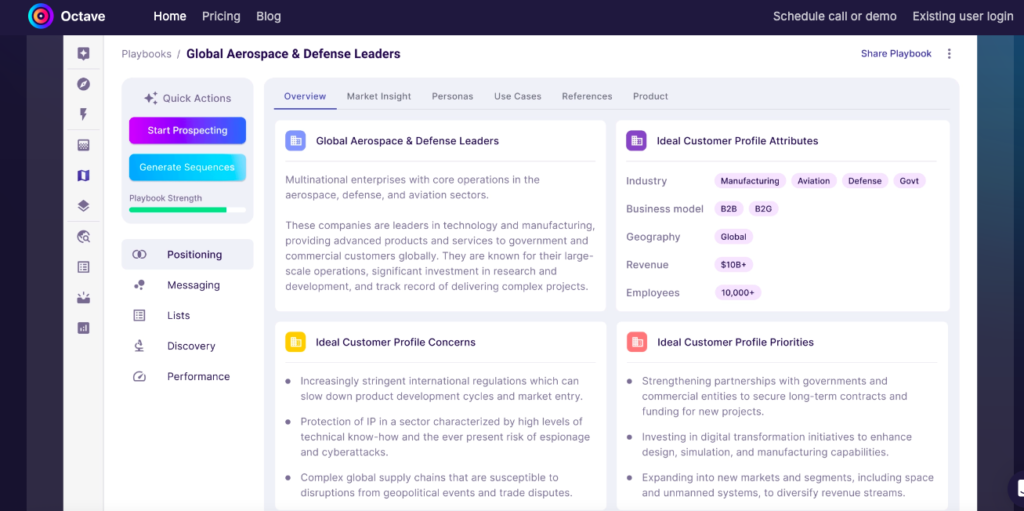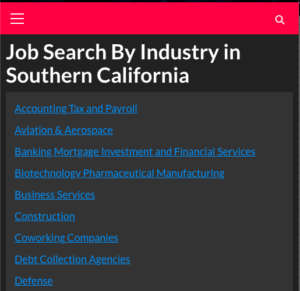Outlining Your Ideal Customer Profile (ICP) is the First Step in Any Go-to-Market Strategy
A solid go-to-market (GTM) strategy can make or break your business. However, many companies rush into executing campaigns without clearly defining their Ideal Customer Profile (ICP). This oversight leads to wasted resources, inconsistent messaging, and underwhelming results. Outlining your ICP is not just a “nice-to-have” step—it’s the foundation for an effective GTM strategy.
What is an Ideal Customer Profile (ICP)?
An ICP is a detailed description of the type of customer that would benefit the most from your product or service and generate the most value for your business in return. It goes beyond surface-level demographic data to include:
- Firmographics: Company size, industry, location, and revenue.
- Behavioral traits: Buying patterns, pain points, and business challenges.
- Technographics: The tools, software, and technologies they currently use.
- Decision-making structure: Key roles involved in purchasing decisions.
Why Start with an ICP?
- Laser-Focused Targeting
Defining your ICP ensures that your GTM strategy focuses on the right accounts. Instead of casting a wide net, you can concentrate on prospects who are most likely to convert, reducing wasted effort and expense. - Personalized Messaging
When you know your audience deeply, you can craft messaging that resonates. This personalization builds trust and credibility, making your outreach efforts significantly more effective. - Efficient Resource Allocation
From lead generation to sales, a well-defined ICP ensures that resources—time, budget, and manpower—are invested where they have the highest ROI. - Better Data for Iteration
A clear ICP provides a benchmark for evaluating campaign performance. Are you targeting the right accounts? Do they match your ICP? Having this clarity allows for continuous refinement.
How Tools Like Keyplay.io Can Help
Modern sales and marketing technology has transformed how companies map their ICPs and execute campaigns. Platforms like Keyplay.io are game-changers in this process, helping teams streamline ICP development and apply it seamlessly to their GTM strategies.
Key Features of ICP Mapping Tools
- Data-Driven Insights
Platforms like Keyplay.io leverage robust databases and machine learning to identify patterns and trends among your best customers. This makes creating a data-backed ICP faster and more accurate. - Dynamic Segmentation
These tools allow you to dynamically segment accounts based on firmographic, technographic, and behavioral data. This segmentation helps you identify high-potential targets that align with your ICP. - ICP-Enriched Campaigns
By integrating your ICP with outreach tools like HubSpot, Outreach.io, or LinkedIn Sales Navigator, platforms like Keyplay.io ensure your campaigns are precisely targeted. No more guessing—every email, call, or ad aligns with your ICP. - Iterative Refinement
Your ICP is not static; it evolves as your business grows. Keyplay.io and similar tools provide real-time analytics that help you refine your ICP as market conditions, customer needs, and business goals change.
Executing a GTM Strategy Based on Your ICP
Once your ICP is mapped, execution becomes straightforward. Here’s a high-level framework:
- Align Your Teams: Ensure marketing, sales, and product teams understand the ICP and are working toward common objectives.
- Develop Tailored Campaigns: Create campaigns specifically tailored to your ICP’s needs and preferences.
- Leverage Tech Tools: Use platforms like Keyplay.io to connect your ICP data to sales and marketing automation tools for streamlined execution.
- Track and Optimize: Continuously measure results against your ICP benchmarks and iterate based on the insights.
OctaveHQ

Octave learns from your website(s), blog posts, and any other information you want to feed Octave about your brand.

OctaveHQ Learns About Your Ideal Customer Profile (ICP) from Your Website and Blogs
OctaveHQ is designed to make ICP discovery seamless by analyzing your public-facing content—such as your website, blog posts, and other digital assets. Here’s how it works:
1. Content Crawling and Parsing
OctaveHQ uses advanced web crawlers to scan your website and blog content for information about your products, services, and target audience. It identifies:
- Core Offerings: Details about your products or services to understand their value propositions.
- Industry-Specific Language: Keywords and terminology that point to your niche market or audience.
- Call-to-Actions (CTAs): The target audience segments addressed by your conversion-focused messaging (e.g., “For enterprise IT managers” or “Small business owners”).
Example:
If your website highlights “IT solutions for mid-sized healthcare companies,” OctaveHQ flags this as a potential ICP descriptor.
2. Content Theme Analysis
OctaveHQ analyzes blog topics and themes to infer customer pain points, interests, and challenges. By examining patterns across your posts, the platform can identify the types of customers you’re addressing most frequently.
- Problem-Solution Matching: Blogs detailing specific problems (e.g., “How to scale cloud infrastructure”) point to the pain points of your target audience.
- Industry Insights: Thought leadership or industry-specific posts help define your market focus.
Example:
A series of blogs about “reducing compliance risks in financial services” signals that your ICP likely includes financial firms concerned about regulation.
3. Audience Signals from Metadata
OctaveHQ also evaluates metadata, tags, and structured data on your site for additional ICP indicators, such as:
- Industries mentioned frequently.
- Typical customer use cases or success stories highlighted.
- Keywords embedded in meta descriptions, headers, or alt text.
Example:
If your metadata includes terms like “B2B SaaS,” “AI-powered analytics,” and “marketing automation,” OctaveHQ will associate these with your ICP.
4. Behavioral Indicators
The platform evaluates user behavior signals captured on your website. While OctaveHQ doesn’t access private analytics, it can infer general trends like:
- What content is prioritized: Pages prominently linked in menus or highlighted in blog posts reflect key ICP characteristics.
- Featured Testimonials: Customer quotes often indicate the types of companies or personas your product serves.
5. Competitor Benchmarking
OctaveHQ supplements its analysis by comparing your website and content against industry benchmarks. This helps refine your ICP by identifying overlaps or gaps relative to competitors in your space.
Example:
If similar companies target “growth-stage SaaS startups,” OctaveHQ considers this context while reviewing your positioning.
6. Delivering Actionable Insights
Once OctaveHQ analyzes your website and blog content, it delivers a detailed ICP report that includes:
- Key Attributes: Firmographics, technographics, and behavioral traits inferred from your content.
- Segmentation Suggestions: Specific personas or account types most likely to align with your offerings.
- Content Gap Analysis: Areas where your content could better align with your ICP or appeal to underserved segments.
Benefits of Using OctaveHQ for ICP Discovery
- Time-Saving: Eliminates the need for manual ICP research by automating analysis of existing content.
- Data-Driven Insights: Provides a solid foundation for refining your ICP based on what your content already communicates.
- Alignment Across Teams: Ensures sales, marketing, and product teams have a unified understanding of the ICP.
How Clay.com Helps Provide Personalized Messaging to Your ICP
In B2B sales and marketing, personalized messaging is critical to capturing attention and driving meaningful engagement with your Ideal Customer Profile (ICP). Clay.com is a cutting-edge platform that simplifies the process of crafting hyper-personalized outreach by integrating data from various sources and automating customization at scale. Here’s how Clay.com helps you deliver personalized messaging for your ICP using Salesforce as an example.
1. Aggregating Data from Multiple Sources
Clay.com integrates seamlessly with Salesforce and other tools to create a comprehensive view of your ICP.
- Firmographics: Enriches Salesforce account records with company size, industry, and location data from sources like Clearbit or LinkedIn.
- Technographics: Identifies technology stacks through integrations with BuiltWith or Datanyze, highlighting prospects already using tools like Salesforce.
- Behavioral Insights: Combines Salesforce activity logs with engagement data from emails, LinkedIn, and more, giving a clearer picture of prospect interactions.
Example:
Clay.com can surface insights like, “Company X uses Salesforce and has recently implemented Salesforce Marketing Cloud.” This enables highly relevant, targeted outreach.
2. Dynamic Personalization at Scale
Clay.com leverages data fields from Salesforce and other sources to create dynamic, personalized messages for hundreds or thousands of prospects. By using templates with placeholders, every email or message feels tailored to the recipient’s needs.
Example:
For an ICP of SaaS companies using Salesforce, your email might read:
“Hi {{First Name}}, I noticed that {{Company}} uses Salesforce CRM. Many of our SaaS clients have found that integrating [your solution] with Salesforce helps increase sales pipeline efficiency by {{statistic}}. Would love to explore how we can help {{Company}} achieve similar results!”
3. Real-Time Enrichment
Clay.com enhances Salesforce records with real-time data from websites, social media profiles, or news articles. This ensures your outreach is not only relevant but also timely.
- Trigger Events: Recent news such as funding announcements, product launches, or Salesforce-related job postings.
- Personal Context: Insights like a prospect’s LinkedIn activity or mentions in press releases.
Example:
Your outreach could reference a recent Salesforce implementation:
“Congrats on rolling out Salesforce Marketing Cloud! We’ve helped similar companies like {{peer company}} get even more value out of Salesforce by streamlining [specific process]. Let’s connect to explore how we can support {{Company}}.”
4. Streamlining Multichannel Campaigns
Clay.com integrates with Salesforce and tools like LinkedIn Sales Navigator or Outreach.io to deliver personalized messaging across multiple channels. This ensures your ICP receives consistent, tailored communication wherever they engage with your brand.
Example Workflow:
- Salesforce account data is enriched through Clay.com with additional firmographics and technographics.
- A tailored LinkedIn connection request is sent, referencing specific Salesforce usage.
- An automated follow-up email is sent, incorporating new insights or contextual triggers.
5. Testing and Iterating Messaging
Clay.com helps you analyze what messaging resonates most with your ICP by tracking email opens, clicks, and responses. You can A/B test different approaches and refine your messaging to maximize impact.
Example:
- Subject line A: “Enhancing Salesforce for pipeline growth”
- Subject line B: “How [Peer Company] optimized Salesforce to boost revenue by 30%.”
Clay.com tracks which variant performs better, helping you fine-tune your outreach.
6. Creating ICP-Specific Campaigns
Clay.com enables you to create customized workflows for different ICP segments, ensuring messaging is tailored to each group’s unique needs.
Example:
- ICP 1: Mid-market SaaS companies → Messaging focuses on Salesforce integration for scaling sales operations.
- ICP 2: Enterprise-level organizations → Messaging emphasizes advanced Salesforce customizations and automation.
Each workflow is tied to specific Salesforce fields, ensuring your campaigns are always relevant and aligned.
Key Benefits of Using Clay.com for Personalized Messaging
- Efficiency: Automates the process of personalizing outreach at scale.
- Relevance: Combines Salesforce data with real-time insights for ultra-targeted messaging.
- Scalability: Handles personalization across thousands of prospects without sacrificing quality.
- Optimization: Continuously improves campaigns through performance tracking and iteration.
By leveraging Clay.com, you can transform Salesforce data into personalized, impactful messaging that resonates with your ICP. This approach not only drives higher engagement rates but also builds trust and long-term relationships with your ideal customers.



